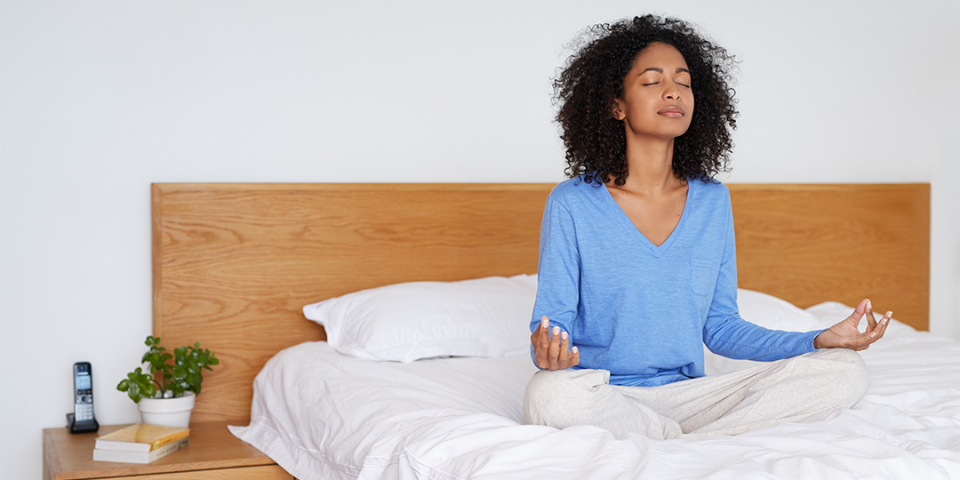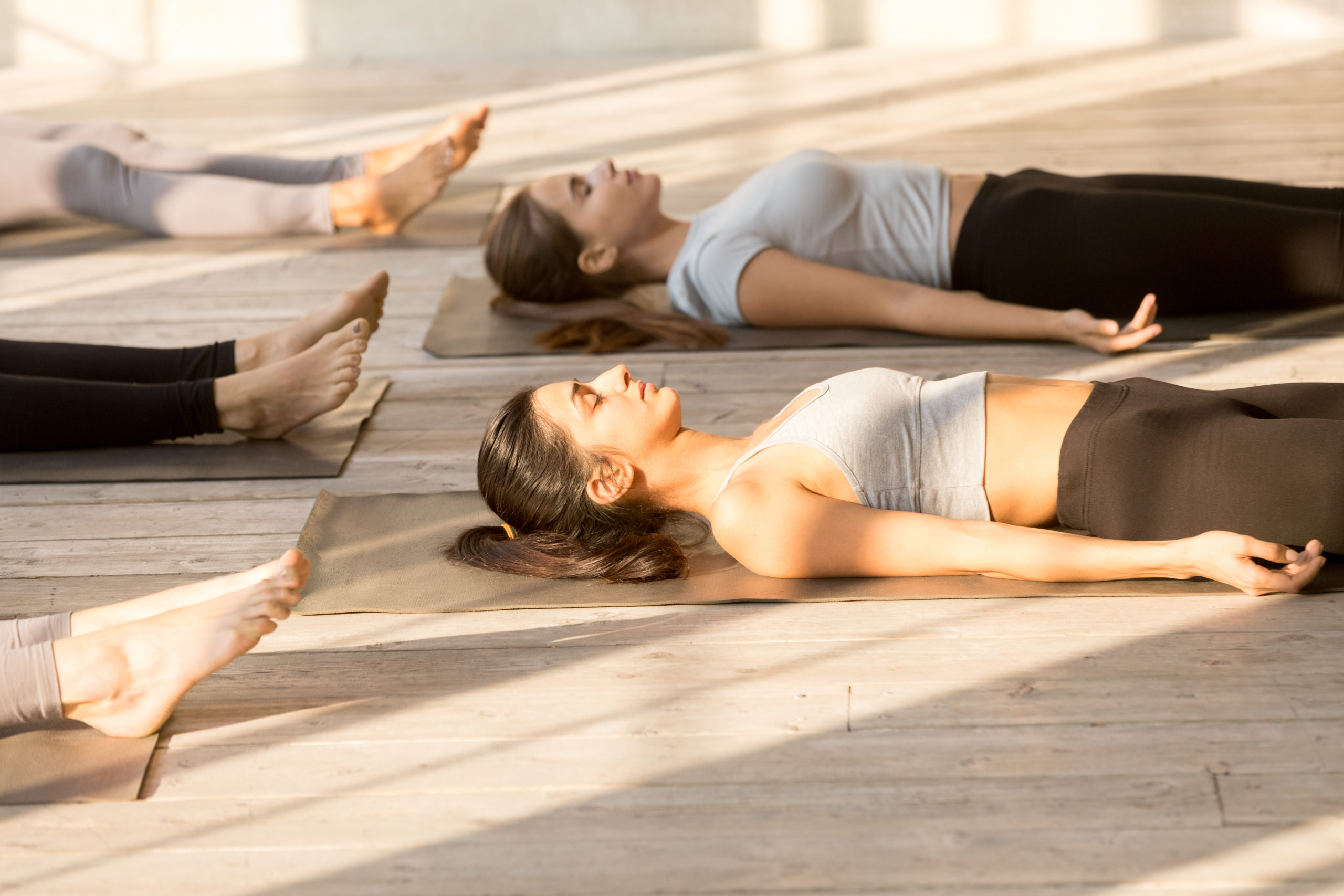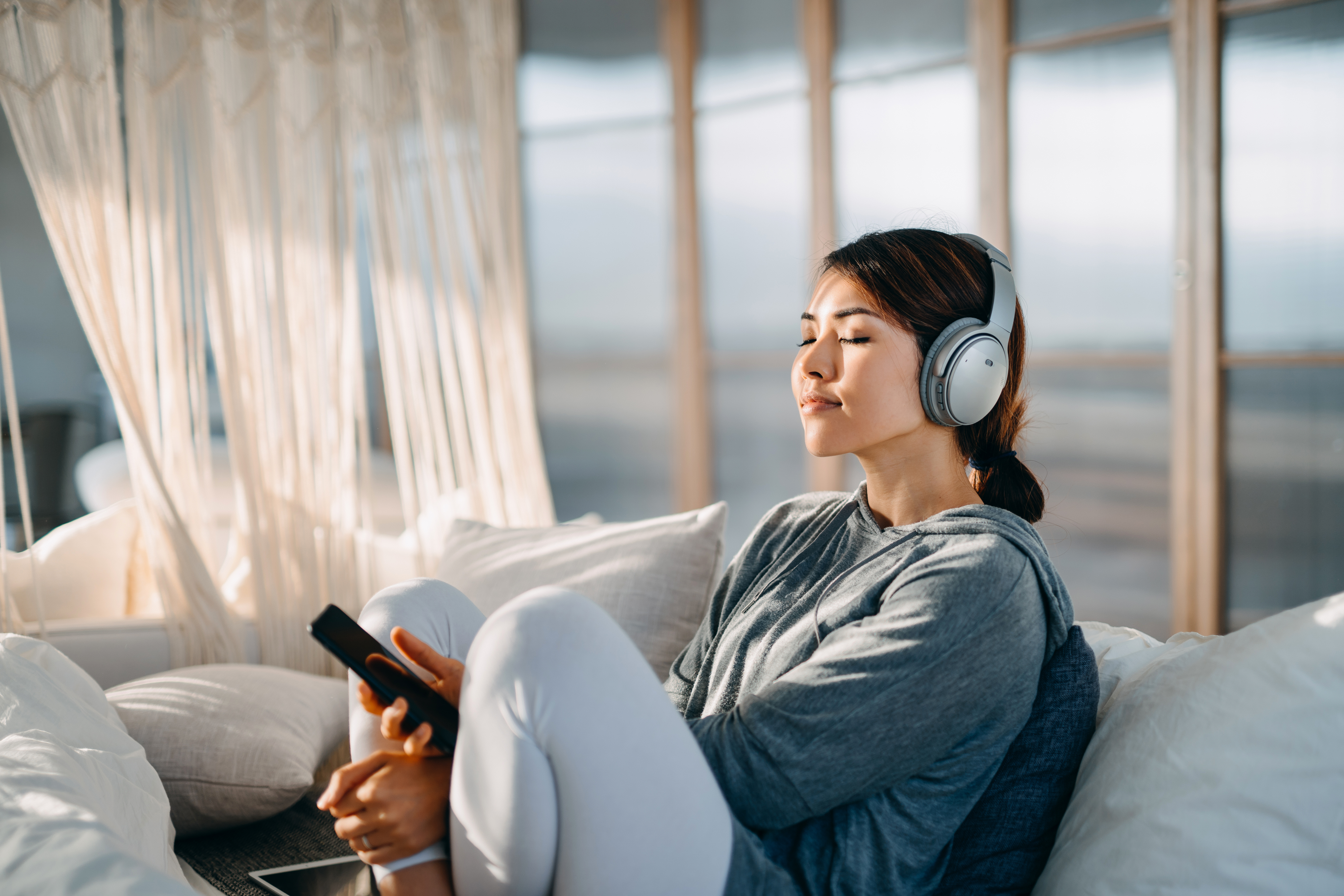7 Breathing Techniques to Help You Sleep Like a Baby

You may not need pills, drinks, or weighted blankets to help you fall asleep faster. You may not even need to spend a cent — simply harness the power of your breath. Certain breathing techniques for sleep may help you get a good night’s rest.
Research shows that deep, slow breathing activates the parasympathetic nervous system — the “rest and digest” part of the nervous system — and reduces activity of the “fight or flight” sympathetic nervous system. This has several sleep benefits.
“When we regulate our breath, we turn our attention to our breath and bodies, which helps us release outside distractions and find a calmer state,” says yoga instructor Jamie King, E-RYT 500. It also helps reduce levels of the stress hormone cortisol and increase levels of melatonin, which regulates the sleep-wake cycle.
Ready to give it a shot? King recommends trying these breathing techniques for sleep as part of your bedtime routine.
1. 4-7-8 Technique

“When your exhale is longer than your inhale, you help reduce the activation of your stress state and encourage your body to move into a thrive state,” King says. Here’s how to do the 4-7-8 breathing technique:
- Find a comfortable position sitting or lying down.
- Inhale through your nose as you count to four.
- Pause when your lungs are full, and hold the breath as you count to seven.
- Slowly exhale through your nose as you count to eight.
- Repeat these steps for several rounds or minutes.
If 4-7-8 feels too long, begin with a 3-4-5 pattern and work up from there, King says.
2. 4×4 Technique
Also called box breathing, the 4×4 breathing exercise helps “quiet the mind with a task,” says yoga teacher and reiki practitioner Ariele Lanning, E-RYT 200, while also shifting you toward a parasympathetic state. Here’s how to do it:
- Find a comfortable position sitting or lying down.
- Inhale through your nose as you count to four.
- Pause when your lungs are full and hold the breath as you count to four.
- Slowly exhale through your nose as you count to four.
- Pause when your lungs are empty and hold the exhale as you count to four.
- Repeat these steps for several rounds or a few minutes.
3. Bhramari Pranayama (Humming Bee Breath)
In a 2021 study, practicing bhramari pranayama (also called humming bee breath) for six weeks helped improve sleep quality and reduce stress in students. Here’s how to do it:
- Find a comfortable seated position.
- Take four slow, deep breaths to ground yourself.
- Inhale and, on the exhale, make a low-pitched tone (like a bumble bee buzzing). Note how the sound resonates throughout your body as you do this.
- Repeat for about five to 10 breaths.
- Finish the practice by taking four slow, deep breaths.
4. Diaphragmatic Breathing

This breathing technique for sleep helps lower cortisol, reduce anxiety, and, according to a 2021 study of 140 nurses, improve sleep quality. Lanning explains how to do belly breathing:
- Lie down on your back and place your hands on your lower abdomen.
- Inhale, slowly drawing your breath into the lower belly, feeling it press into your hands — your chest should barely move.
- Exhale slowly, feeling your stomach fall away from your hands.
- Continue this deep diaphragmatic breathing for several minutes.
5. Three-Part Method
Once you feel comfortable with diaphragmatic breathing, you can take it to the next step with this practice to promote a sense of calm, Lanning says.
- Lie down on your back and place your hands on your lower abdomen.
- Start with three diaphragmatic breaths.
- On the next breath, inhale deeply and slowly. Aim to fill your diaphragm one-third of the way into the breath. On the same inhale, begin filling your rib cage on the next third of the breath. On the final third of the inhale, fill your chest.
- Let the exhale happen just as slowly, releasing in the opposite direction: First your chest, then your rib cage, then your belly.
- Repeat this slow inhale and exhale for several rounds or minutes.
6. Alternate-Nostril Breathing
This breathing technique helps lower heart rate and may reduce anxiety. “Alternate-nostril breathing helps you focus on breathing through the nose, which helps to bring our body to a more relaxed state and prepare for sleep,” King says. Here’s how to do it:
- Find a comfortable position sitting or lying down.
- With your right hand, bend your index and middle fingers or rest them gently on your forehead. Then place your right thumb and ring finger on either side of your nose.
- Take a few regular breaths.
- Close your right nostril with your thumb and inhale through your left nostril.
- Close your left nostril with your ring finger and open your right nostril to exhale. Then inhale through just the right nostril.
- Close your right nostril and open your left nostril to exhale. Then inhale through just the left nostril.
- Continue repeating this pattern for several rounds or minutes.
- Complete the practice with a few deep breaths.
7. Sound Meditation

You might also want to consider sleep meditation. These practices help quiet your mind so it’s easier to doze off. BODi’s Sound Meditation, led by international sound meditation facilitator and musician Scarlett de la Torre, uses various instruments to create a “sound bath” that promotes relaxation.





